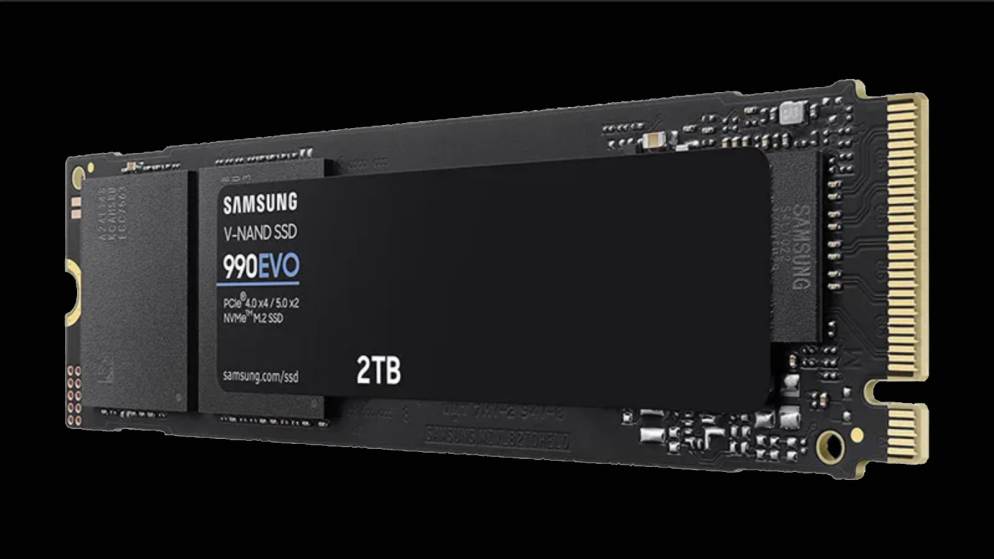significantly though this model is just midrange, it paves the way for future SSDs that will be significantly better.
Samsung has accidently unveiled an upcoming SSD dubbed the 990 EVO. Previously, there was merely a Pro model, which used a PCIe 4.0 interface, and the company has yet to introduce a next-generation PCIe 5.0 device. This new drive has the older PCIe 4.0 and PCIe 5.0 interfaces, allowing it to be used on older and newer systems. The link to the SSD’s product page link has been removed following its outing by news sources, but clearly, Samsung has something fascinating up its sleeve here.
Sadly, the 990 EVO is a midrange drive, so anyone looking to max out a PCIe 5.0 connection at 14GB/s will be terribly disappointed. Instead, the drive will have a maximum transfer rate of 5GB/s and 4.2GB/s for sequential reads and writes, according to Tom’s Hardware, which referred to the German site Winfuture that uncovered the now-deleted entry on Samsung’s Ukrainian website. The product page shows a “990 EVO” in the search filter, where you may sort by drive model, but selecting it reveals the page has been removed—oops. The EVO drive supports four PCIe 4.0 lanes and two PCIe 5.0 lanes, as all configurations are equal in bandwidth at 8GB/s.

Although the drive is a technological curiosity, it is not yet clear who would choose to purchase it rather than a dedicated solid-state drive (SSD) that is either PCIe 4.0 or 5.0. This is because the drive halves the difference between the two interfaces and does not reach its maximum capacity. The 990 EVO, for instance, is not completely stressing either interface because a PCIe 4.0 drive may theoretically achieve a throughput of approximately 7 gigabytes per second, whereas a PCIe 5.0 drive can achieve double that amount, at 14 gigabytes per second. If this is the case, then the question arises as to who would consider this to be an appropriate alternative for their existing equipment.
If there are people in the world who are interested in a solid-state drive (SSD) that is future-proof, then the drive would make perfect sense in that situation. At the moment, PCIe 4.0 is already highly developed, and PCIe 5.0 SSDs are already available; nevertheless, the majority of motherboards do not yet support it. In addition, there are no PCIe 5.0 interfaces on laptops; nevertheless, it is likely that these interfaces will be introduced this year, along with motherboards that are capable of supporting this interface. We anticipate that you could hypothetically utilise this drive right now on your PCIe 4.0 system, and then later on in this year, you could switch it out for a more recent model.
As a result of the fact that Samsung’s EVO range is its most cheap portfolio, concessions are to be anticipated. According to Tom’s Hardware, the firm has not introduced a new EVO drive in a number of years. Prior to that, the 970 Plus EVO on the PCIe 3.0 interface was the most recent EVO drive that the company has published, so it has been quite some time. It is not yet known when this drive will be placed on the market, nor is it known what capacities or pricing it will be offered at; however, given that there is a product page, it shouldn’t be too much longer than that.

